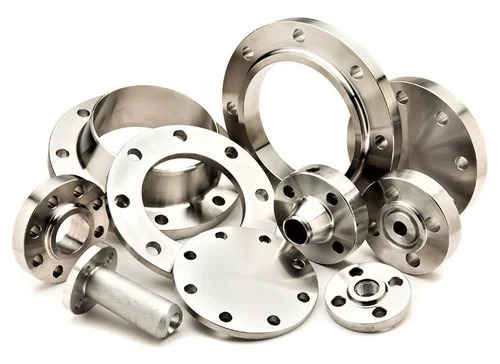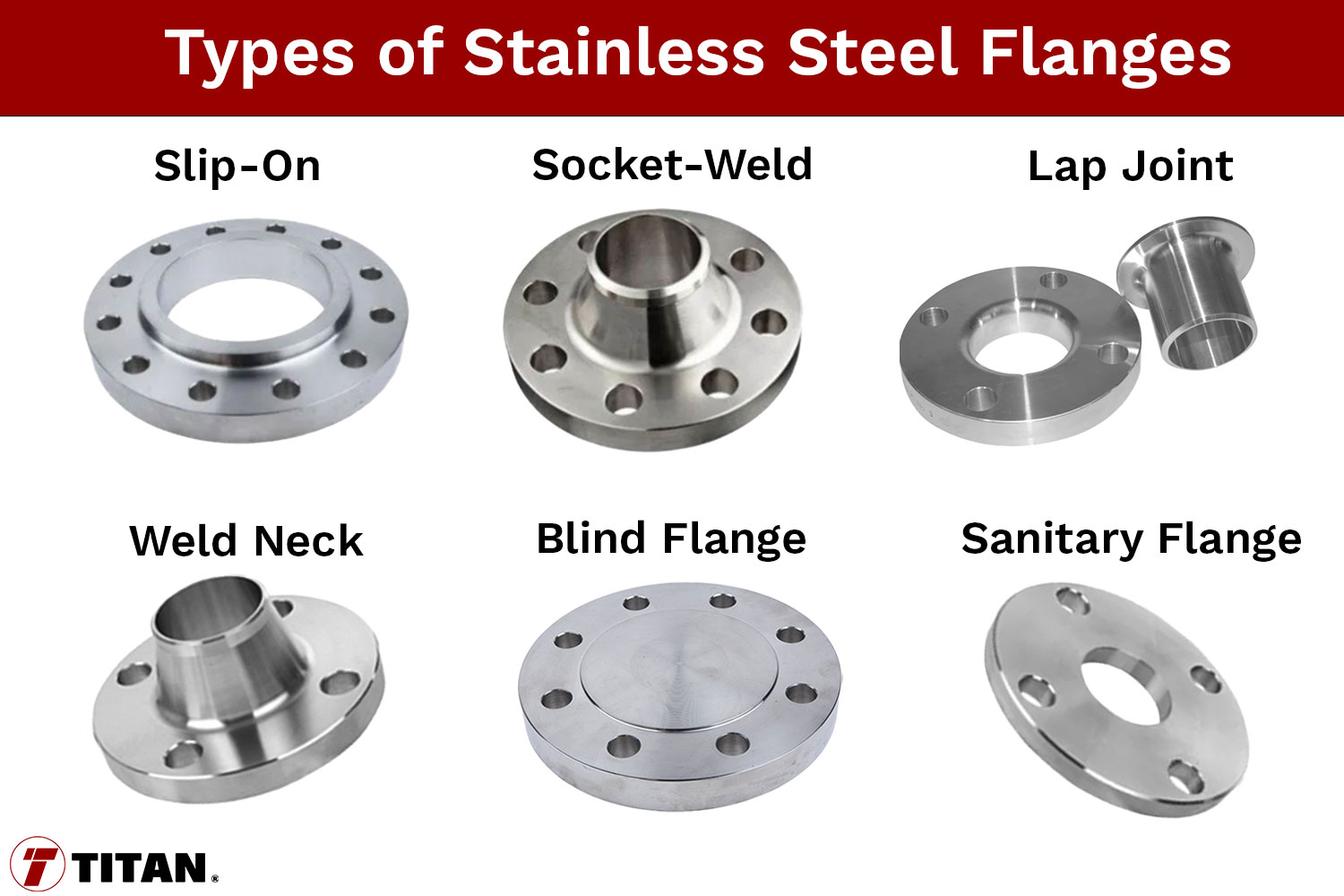A Comprehensive Guide to Flange Basics
A Comprehensive Guide to Flange Basics
Flanges are essential components in piping systems, used to connect pipes, valves, and other equipment. They create a secure, leak-proof connection that is vital for many industrial applications. A flange connection typically involves two flanges attached to the ends of pipes or fittings, which are then bolted or welded together. This method allows for easy disassembly when needed, making maintenance and inspection more manageable. In some cases, like sanitary flanges, a gasket is used to ensure a tight seal. Flanges are available in a wide range of materials, including carbon steel, stainless steel, and others, making them suitable for different environments and requirements. This guide explores the basics of flanges, their importance, types, sizes, and more. Keep reading to understand how these critical elements support modern infrastructure.
Usage of Flanges
Flanges serve multiple important functions in piping systems. They help join pipes securely, preventing leaks and ensuring the safe transport of fluids. Additionally, they provide a sealing surface to prevent fluid escape, enhance pipeline stability by distributing load across bolts, and assist in controlling fluid flow through the use of valves and other devices. Flanges are widely used in industries such as manufacturing, petrochemicals, and plumbing. Their ability to create strong, reliable connections makes them an essential part of any piping system, ensuring efficiency, safety, and durability in various applications.

Flanges' Significance in Plumbing & Piping
In piping systems, flanges play a crucial role in assembly and connection. They help prevent leaks in high-pressure environments, allowing for safe and efficient fluid movement in industrial settings. The use of flanges ensures smooth pipe connections and enhances overall system performance. Understanding the different face types and materials is essential for selecting the right flange for a specific application. For example, stainless steel flanges are often preferred in petrochemical projects due to their durability and resistance to corrosion. Adhering to standards like ASME and ASTM helps maintain quality and compatibility in flange production.
Proper selection and installation of flanges are key to ensuring the reliability and longevity of a piping system. Whether it's for a small residential project or a large industrial facility, flanges are a fundamental part of any fluid transport system.
Examining Flange Varieties: An In-Depth Look
There are several types of flanges, each designed for specific applications and conditions. These include slip-on, socket-weld, lap joint, weld neck, blind, and sanitary flanges. Standards from organizations like the American Society of Mechanical Engineers (ASME) and the American Society for Testing and Materials (ASTM) ensure quality and compatibility in flange design and manufacturing. Some flanges, especially those used in hydraulic applications, follow SAE J518 or ISO 6162 standards. Understanding these variations helps in choosing the right flange for the job, whether it's for low-pressure or high-pressure systems, or for environments requiring special materials or designs.

1) Slip-On Flanges
Slip-on flanges are popular in piping systems due to their ease of installation and cost-effectiveness. They are designed to slide over the pipe end before being welded in place, making them ideal for situations where quick assembly is needed. These flanges do not require matching the pipe thickness, which reduces material costs. While they can handle both high and low temperatures and pressures, they are generally less suitable for extreme conditions compared to other types like weld neck flanges. Their lightweight design and simple alignment process make them a practical choice for moderate service applications.
2) Socket-Weld Flanges
Socket-weld flanges are commonly used in smaller diameter, high-pressure piping systems. They offer a strong, reliable connection by inserting the pipe into a recessed area of the flange, known as the socket, and then welding it in place. This design minimizes turbulence and reduces the risk of leakage, making them ideal for chemical, petrochemical, and steam applications. They also provide easier alignment and assembly, which can be beneficial during installation. Socket-weld flanges are particularly useful in environments where maintaining a clean and consistent flow is essential.
3) Lap Joint Flanges
Lap joint flanges are ideal for piping systems that require frequent disassembly and maintenance. They consist of two parts: a stub end and a flange. The stub end is welded to the pipe, while the flange slides over it, allowing for easy alignment and access. This design enables the flange to rotate, simplifying bolt hole alignment, especially in complex or large pipe systems. Lap joint flanges are cost-effective since only the stub end needs to match the pipe material or lining, while the flange itself can be made from a less expensive material. They are particularly useful in systems with expensive or lined pipes, offering flexibility and ease of maintenance.
4) Weld Neck Flanges
Weld neck flanges are widely used in high-pressure and high-temperature industrial applications, such as in chemical processing plants, power generation facilities, and construction projects. They provide a strong, durable connection between pipes, valves, and other components. Available in different styles like standard long, extra long, integral, and nipoflange, they are suited for a variety of applications, from low-pressure systems to heavy-duty environments. One of their main advantages is their ability to reduce stress and provide a leak-proof connection, making them a preferred choice in critical piping systems where reliability is essential.
5) Blind Flanges
Blind flanges are solid discs used to close off the end of a pipe, preventing the flow of fluids or gases. They are commonly used in water systems, chemical manufacturing, and construction for pipeline extensions and pressure testing. Designed for high-pressure environments, blind flanges are available in materials like A36 steel plate and stainless steel, depending on the application. Proper installation requires a clean and smooth pipe end, followed by bolting the flange in place to create a secure seal. They are an essential component in systems that need temporary or permanent closure of piping lines.
6) Sanitary Flanges
Sanitary flanges are specifically designed for applications where cleanliness and sterility are critical, such as in pharmaceutical, biotech, and food and beverage industries. These flanges allow for quick assembly and disassembly, making them ideal for regular cleaning and maintenance. Their smooth, non-contaminating surfaces prevent the buildup of bacteria and other contaminants. Sanitary flanges are manufactured to meet strict industry standards, such as those set by 3-A Sanitary Standards and ASME-BPE, ensuring that the integrity and quality of products passing through the piping system are maintained at all times.
Frequently Asked Questions
What are flanges?
Flanges are ring-shaped fittings used to connect pipes, valves, pumps, and other equipment in a piping system. They allow for easy access for cleaning, inspection, or modification of the system, making them a versatile and essential component in many industrial applications.
How do I choose the right stainless steel flange for my application?
Choosing the right stainless steel flange depends on several factors, including the size and type of the pipes being connected, the pressure and temperature of the system, the type of fluid being transported, and the environmental conditions. Stainless steel offers excellent corrosion resistance, making it ideal for harsh or acidic environments, but it can be more expensive than carbon steel. Carbon steel is stronger and more cost-effective, making it suitable for high-pressure applications in less corrosive environments. Consider factors like temperature tolerance, weldability, and industry-specific standards when selecting the best option for your project.
How are flanges installed?
The installation of flanges typically involves aligning the flanges on either end of the pipes, inserting the appropriate gasket between them, and securing the assembly with bolts. The exact installation method can vary depending on the type of flange and the specific application. It’s important to follow manufacturer guidelines and industry standards to ensure a secure and leak-proof connection.
Conclusion
Flanges are essential components in modern infrastructure, playing a vital role in creating strong, leak-proof connections in piping systems across various industries. From slip-on and socket-weld flanges to blind and sanitary flanges, each type is designed for specific applications, ensuring the integrity and efficiency of fluid transport systems. The versatility of flanges in terms of materials and designs makes them adaptable to a wide range of environments and requirements. Understanding the different types of flanges and their uses is crucial for ensuring the reliability, safety, and performance of piping networks worldwide. Whether you're working on a small-scale project or a large industrial system, flanges are an indispensable part of the process.
Shop all flanges
Jiangsu Bailite Transmission Technology Co., Ltd , https://www.zsindustrialbelt.com